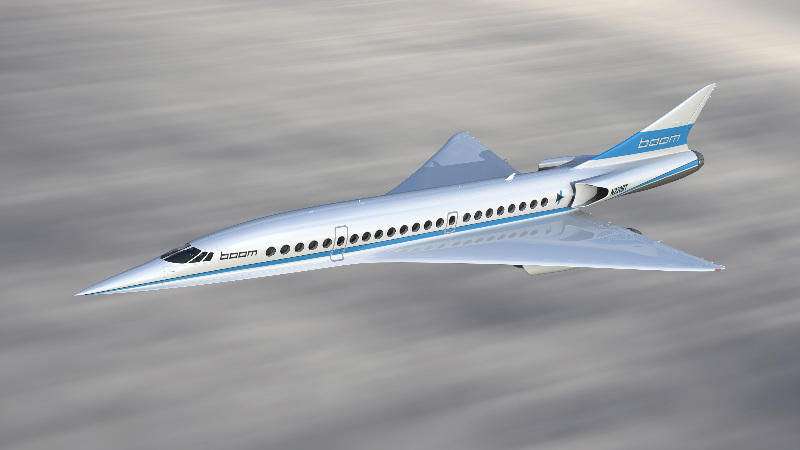Boom jet would operate on routes that are primarily overwater
The dream of economically viable supersonic transport continues to inspire those who believe there is a place for a new-generation Concorde in tomorrow’s business and commercial aviation market. Colarado-based Boom Technology is one of the latest contenders.
The company recently unveiled a mockup for a demonstrator that will be used to test technologies for a proposed future supersonic transport. The delta-wing demonstrator, designated XB-1, will be slightly more than 20m long and features a 5m wingspan. It is supposed to fly next year.
The company ultimately hopes to develop a three-engine aircraft seating 45-55 passengers and capable of flying at Mach 2.2 — like the much larger Concorde. The 51m-long design would feature a wingspan of 18.2m and a maximum takeoff weight of 6.1t and would have a range of 9,000nm. Priced around $200m, it would be powered by GE J85-21 engines, which have previously equipped the F-5 and T-38. The company has an ambitious 2020 first flight target for the full-scale aircraft.
The company says that technologies including composite fuselages and high-temperature material systems have opened up the prospect of efficient, economical, and safe supersonic flight. Its proposed Boom jet would operate on routes that are primarily overwater—such as New York to London or San Francisco to Tokyo, flying subsonically when over land. It says it has identified over 500 routes that could benefit immediately and significantly from supersonic service.
The company says that airlines will be able to operate the aircraft profitably while charging the same fares as today's business class. Total operating cost per-seat mile is claimed to be comparable to subsonic business class. Boom Technology says it can achieve this thanks to a 30% efficiency improvement over Concorde.

